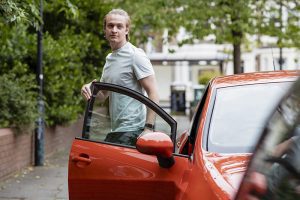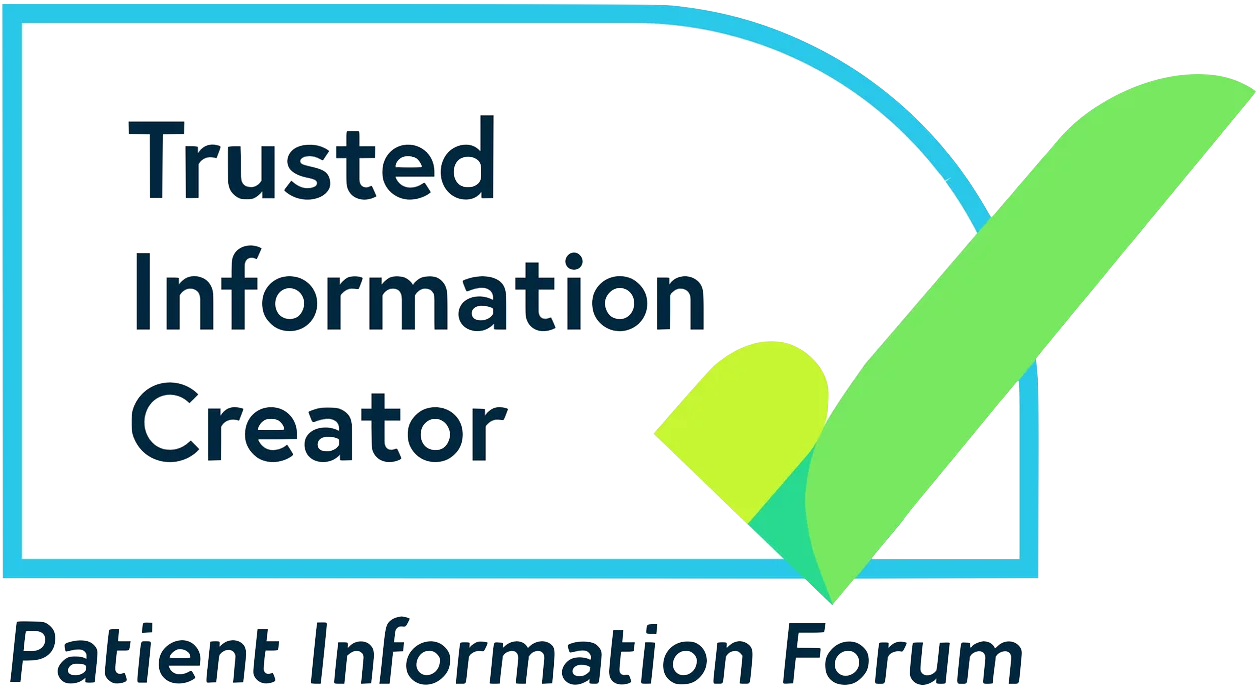Driving rules for epilepsy
There are different rules for driving with epilepsy, depending on the type of seizures you have, when they happen and what type of vehicle you want to drive.
What would you like to find out today?
Rules for car and motorbike licences
You must tell the driving agency about your seizures. If you’ve not done this yet, see our page about stopping driving and telling the driving agency.
The rules for when you can drive with epilepsy depend on the type of seizures you have. You also need to follow your doctor’s advice about your treatment and check-ups for epilepsy.
Seizures that happen while you’re awake, and affect your consciousness
If you have seizures that affect your consciousness, you must be seizure free for at least 12 months, before you’re allowed to drive.
These are a few examples of seizures that affect your consciousness:
- Tonic-clonic seizures
- Focal impaired awareness seizures (used to be called complex partial)
- Absence seizures
I’ve had a one-off (breakthrough) seizure after being seizure free
If you’ve got your licence on the basis of being seizure free, and then have a seizure, you must stop driving and surrender your licence.
You will usually need to be seizure free for 12 months before you can start driving again. However, if your seizure happened because of your doctor advising you to change or stop your medicine, you might be able to start driving again sooner than this. See our information about changing or stopping your medicine.
Seizures that happen in your sleep
If your seizures always start when you’re asleep, you might be allowed to drive even if you continue having them. They don’t need to be at night. A seizure that starts during a daytime nap also counts as a sleep seizure.
The driving agency may allow you to drive without being seizure free if:
- You’ve been having sleep seizures for at least 12 months, and you’ve never had awake seizures, or
- You’ve had awake seizures in the past, but have only been having sleep seizures for at least 3 years
Seizures that don’t affect your consciousness
If your seizures never affect your consciousness, the driving agency may allow you to drive without being seizure free. This is as long as you:
- Stay fully conscious and aware of what’s happening around you during your seizures
- Are able to move and don’t lose control of your movements during your seizures
- Have been having this type of seizure for at least 12 months
- Have never had any other type of epileptic seizure
If you’ve ever had an epileptic seizure that affected your consciousness, this rule won’t apply to you and you’ll need to be 12 months seizure free before you can drive.
This rule might apply if you’ve been told you have focal aware seizures. But the driving agency will need full information about what happens to you during your seizures before deciding if you can drive.

Changing or stopping your medicine
If you need to change, reduce or stop your epilepsy medicine, you might need to stop driving for a period of time. Click on the questions to find out more:
-
I'm changing my epilepsy medicine. Do I need to stop driving?
Your doctor will advise you if you need to stop driving and for how long. The advice they give you will depend on whether the new medicine you are switching to is likely to be as effective as the old one.
You don’t need to tell the driving agency or return your licence, unless you have a seizure.
-
My doctor has advised me to stop taking epilepsy medicine. Do I need to stop driving?
The driving agencies recommend that you should stop driving while coming off your medicine, and for 6 months after you’ve stopped taking it. Your doctor will tell you if you can start driving again earlier than this. You don’t need to tell the driving agency or return your licence, unless you have a seizure.
Sleep seizures and seizures that don’t affect your consciousness
If you only have sleep seizures or seizures that don’t affect your consciousness, you might not need to stop driving while coming off your medicine. Your doctor will tell you if this is the case.
-
What happens if I have a seizure while I’m changing or withdrawing my epilepsy medicine?
If you have a seizure within 6 months of changing or withdrawing your epilepsy medicine, in most cases you’ll need to stop driving and surrender your licence.
You’re likely to lose your licence for 12 months, but you may be able to get it back sooner than this if all these things apply:
- You go back on the medicine that worked to control your seizures
- You’ve been back on that treatment for at least 6 months and
- You’ve been seizure free since going back on that treatment
Sleep seizures and seizures that don’t affect your consciousness
If you only have sleep seizures or seizures that don’t affect your consciousness, you might not need to stop driving if you have a seizure while coming off your medicine. This would only apply if the driving agency has already said you can drive with your type of seizures, and the seizure you have is the same type.
Got any questions?
If you have questions about driving and epilepsy, or anything else related to living with epilepsy, our expert advisors are here to help.
I’ve had a first seizure and not been diagnosed with epilepsy. When can I drive?
If you’ve had a single seizure for the first time, you must stop driving and tell the driving agency. You may be able to get your licence back after 6 months, as long as you stay seizure free. If you had more than one seizure within a 24 hour period, this also counts as a single seizure.
If test results show a cause for your seizure (such as damage in your brain) you are likely to need to be seizure free for 12 months before you can drive. This is because you may be at increased risk of having more seizures.
If, after your first seizure, you go on to have more seizures, the epilepsy driving rules further up this page will apply.
Driving a bus, coach or lorry (group 2 licences)
For safety reasons, the rules for driving a bus, coach or lorry are much stricter than for car and motorbike licences. These rules apply if you want to drive any of these vehicles:
- Medium-sized vehicles (categories C1 and C1E)
- Large vehicles (categories C and CE)
- Minibuses (categories D1 and D1E)
- Buses (categories D and DE)
Licences that include any of these categories are sometimes called group 2 licences.
-
More than one seizure
If you’ve had more than one seizure, you may be able to get a group 2 licence if you:
- Have been seizure free for at least 10 years
- Have not taken any epilepsy medicine in that time
- Are not at risk of more seizures
- Are not a source of danger while driving
-
Single seizure
If you had a single seizure, you may be able to get a group 2 licence if you:
- Have been seizure free for at least 5 years
- Have not taken any epilepsy medicine in that time
- Are not at risk of more seizures
- Have had a recent assessment by a neurologist
If your doctor says your seizure was provoked, there is a chance you could get your group 2 licence back earlier than 5 years. See our information below about provoked seizures.

Driving vehicles for work
To drive any vehicle for work on public roads, you will need to hold a driving licence that includes the category for that type of vehicle. These are some of the vehicles we get asked about most often:
-
Ambulances
The type of driving licence you need to drive an ambulance depends on the ambulance service trust that you are applying to and the types of vehicles it uses. You may need a C1 category on your licence.
To get the C1 category added to your licence, you need to be:
- Seizure free and off epilepsy medicine for 10 years (for more than one seizure) or
- Seizure free and off epilepsy medicine for 5 years (if you’ve had a single seizure)
-
Taxis
You will need a standard car driving licence to drive a taxi, but some local authorities may set higher medical standards on top of this. For example, Transport for London will only grant a private hire drivers licence to people who meet the medical standards for a group 2 licence.
-
Forklift trucks and farm vehicles
You don’t need a driving licence to drive a forklift truck or farm vehicles on private land. But, if your seizures are not well controlled, it could put you or others at risk when you are driving. The Health and Safety Executive says employers should assess a worker’s fitness to drive on a case-by-case basis.
If you need to drive any vehicle on public roads, you will need to meet the driving rules to hold a driving licence for that type of vehicle.

Provoked seizures
A provoked seizure is a seizure caused by something that is unlikely to happen again or can be easily avoided. Examples include a seizure within a week of a stroke or head injury, in a person with no history of seizures. A seizure caused by missing doses of medicine or lack of sleep would not be considered provoked.
If your doctor has told you your seizure was provoked, you can give details about this when telling the driving agency about your seizure. The driving agency will look at provoked seizures on an individual basis and let you know when you can drive. In most cases, the time people need to take off driving for provoked seizures is the same as for unprovoked seizures.
For information about provoked seizures, see DVLA’s Assessing fitness to drive guide for medical professionals, Appendix B.



